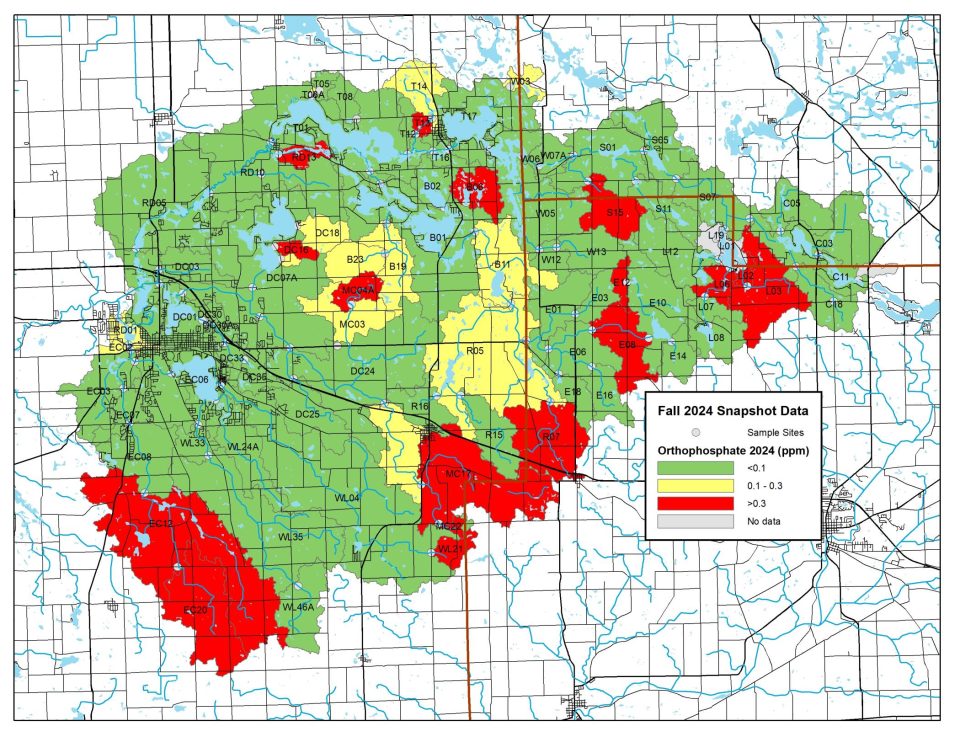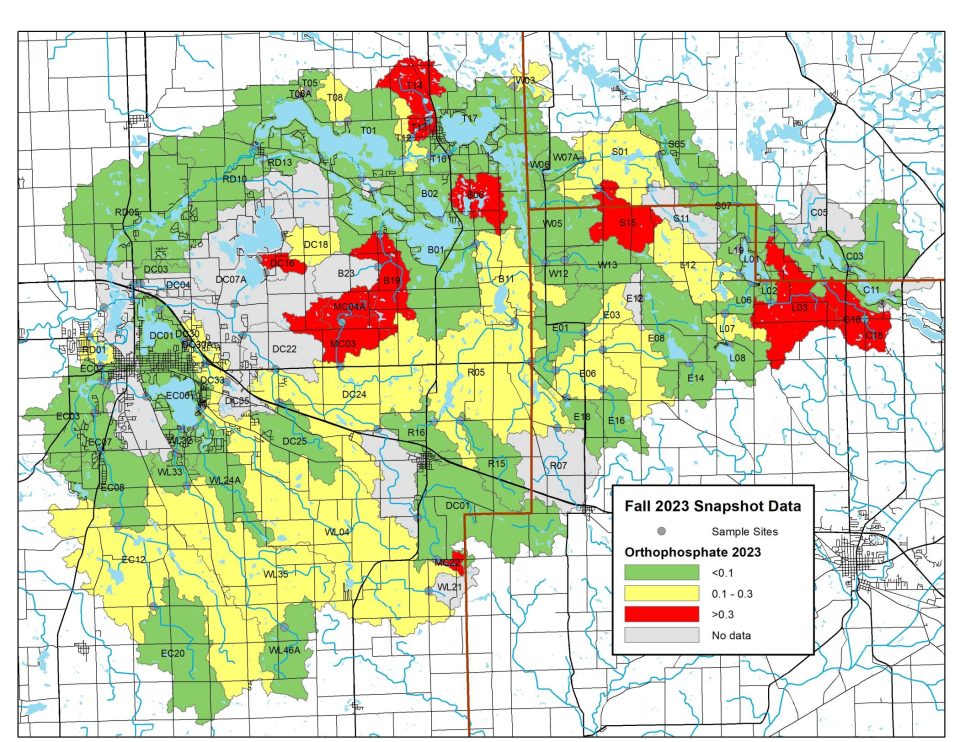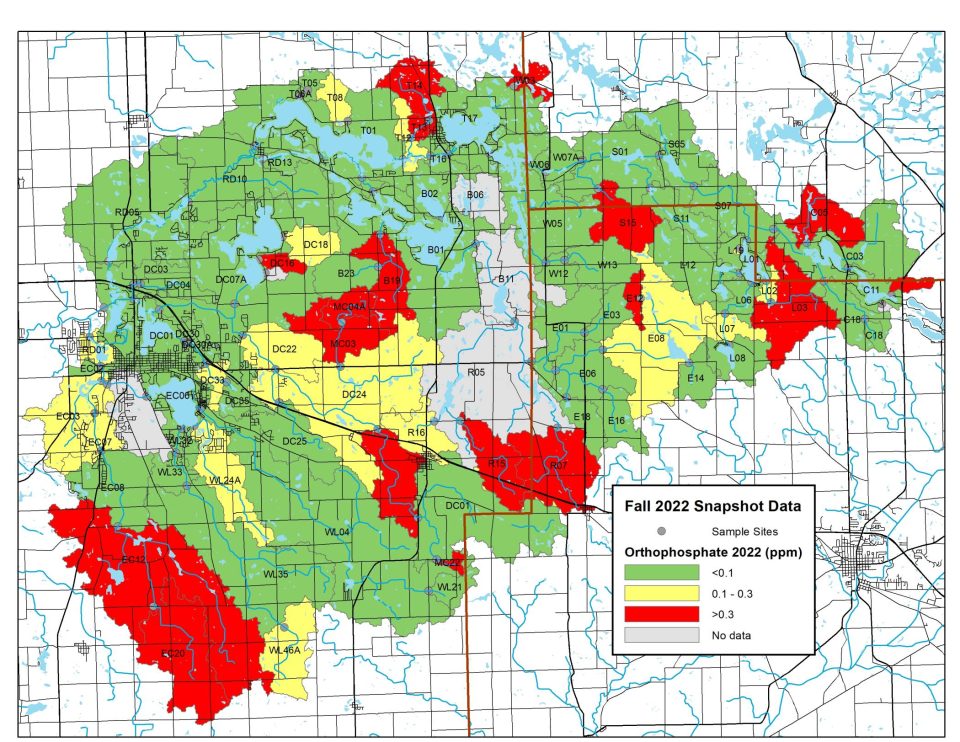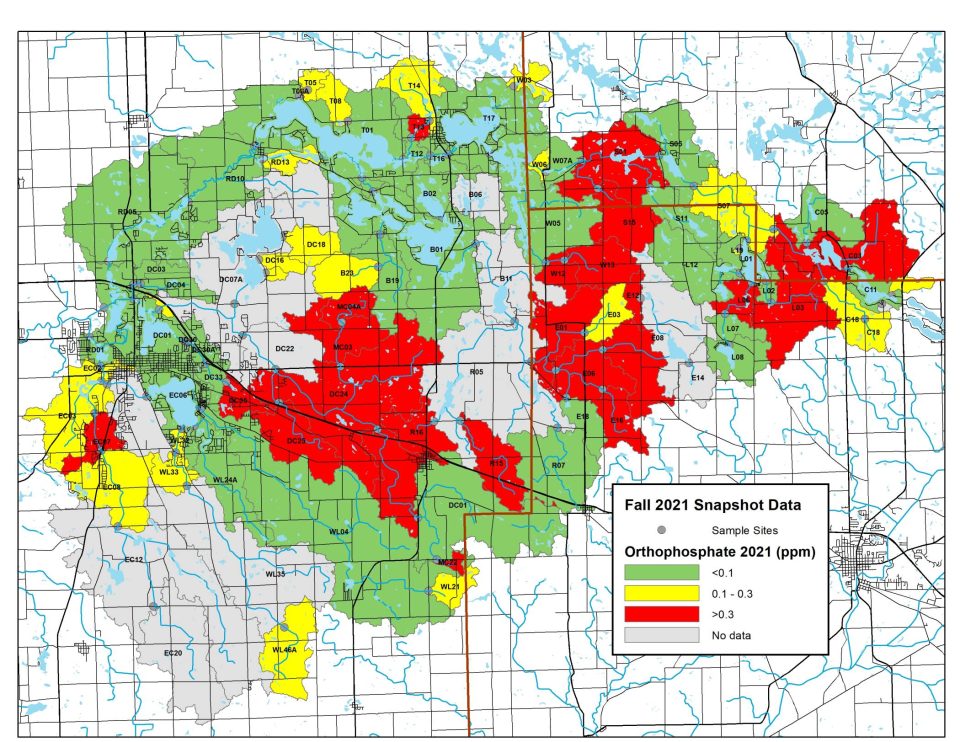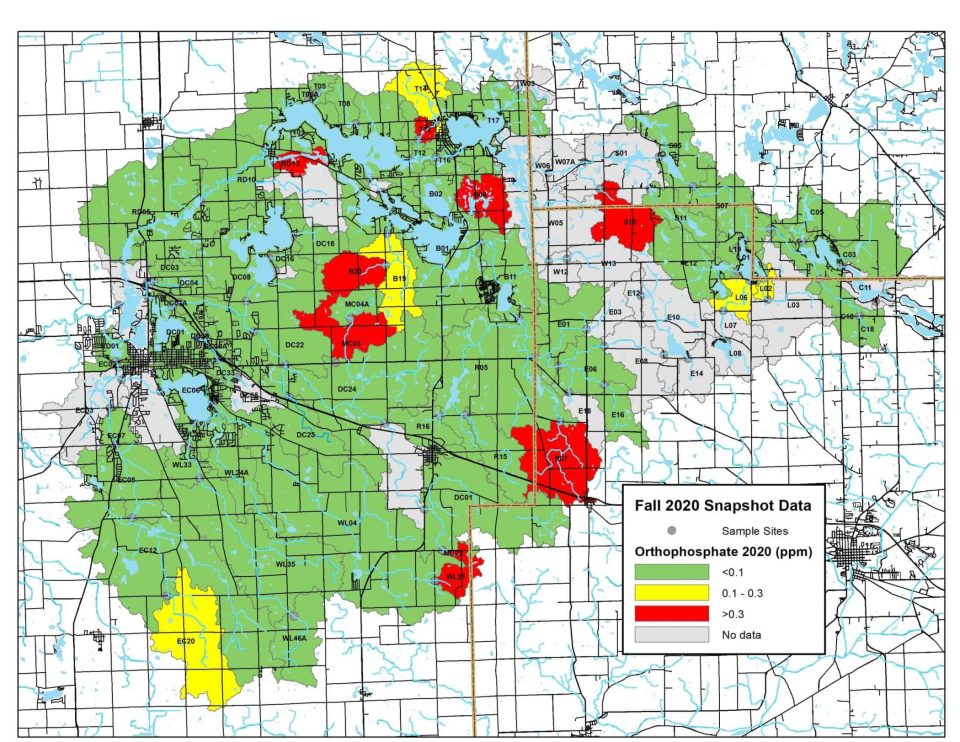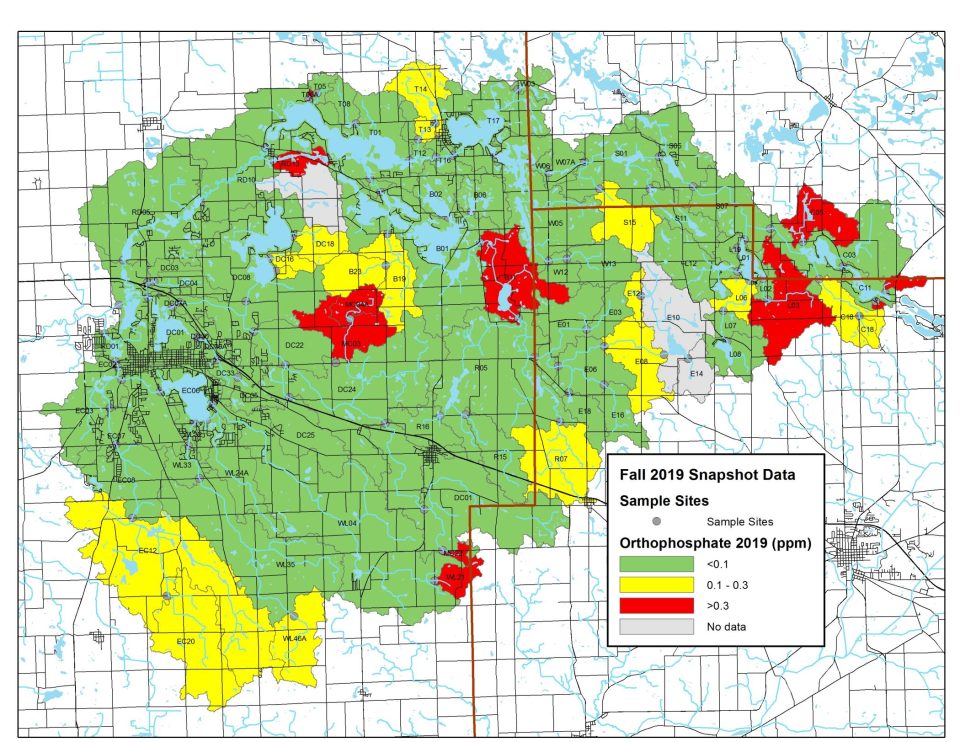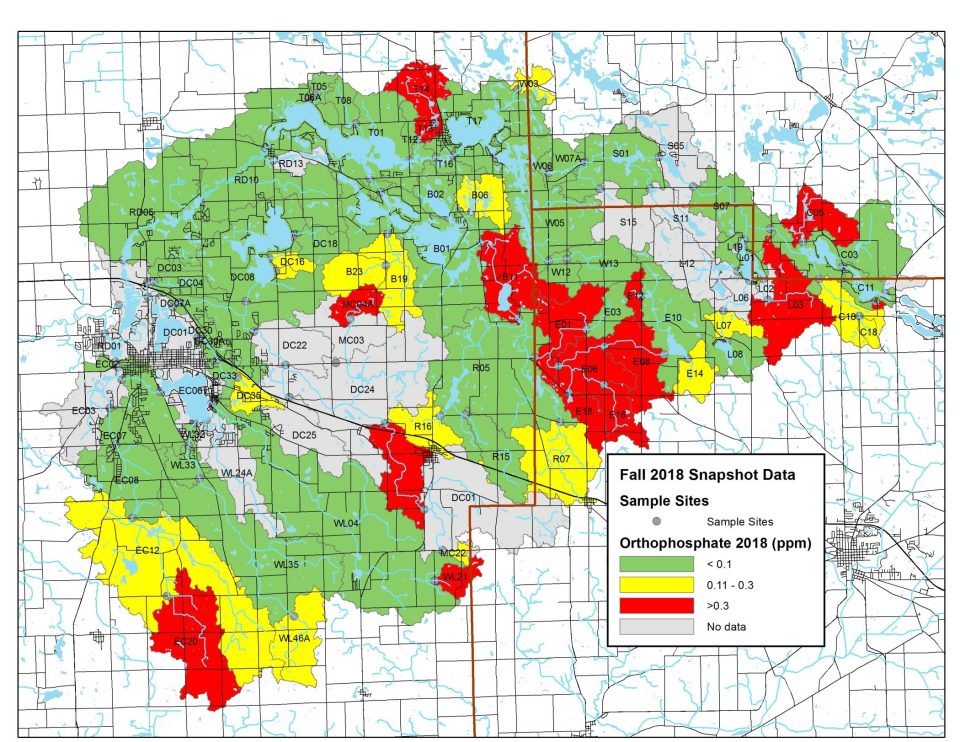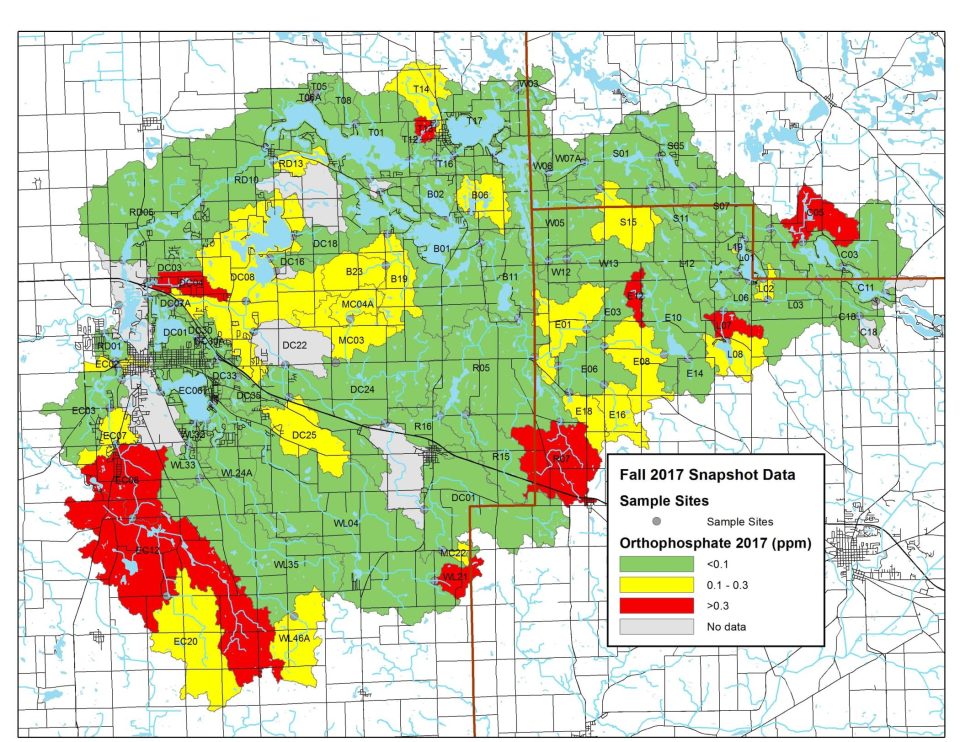Snapshot Day Results: Orthophosphate
See Full Monitoring Results and Maps Below
Too much phosphorus can be harmful to plant and animal life.
Phosphorus is an essential nutrient, and it stimulates plant growth. Orthophosphates are a form of phosphorus dissolved in water, which makes them easy for plants to use. Phosphorus enters local waterways on soil particles, through organic matter like dead plants or animal waste, and in manmade products like fertilizer and detergents. Too much of this nutrient can have devastating effects for our water quality, like algae blooms, decreased dissolved oxygen levels, taste and odor problems, and a toxic aquatic habitat. In extreme scenarios, too much phosphorus can speed up the process of eutrophication — the death of a lake.
On Snapshot Water Monitoring Day, volunteers test for orthophosphate at sites across our watershed. While results have gradually improved over several years, we consistently find areas of moderate to critically high orthophosphate levels. This is likely caused by significant rain events that carry phosphorus from the surrounding land into area lakes and streams.
Explore full results below. Click on any map to zoom in.
2024 Orthophosphate Levels
2024 monitoring showed a slight improvement in orthophosphate levels across the watershed, with fewer areas of moderate concern. However, more testing sites showed critically high levels than the previous year.
It’s not yet clear what caused these elevated orthophosphate levels. There were no significant rain events before monitoring day. In fact, our watershed was experiencing drought conditions. Depending on the location, phosphorus could have come from animal waste, excess fertilizer used on agricultural fields and lawns, or other sources.
2023 Orthophosphate Levels
2023 monitoring showed some improvement in orthophosphate levels across the watershed. Testing sites showed more moderately high levels than the previous year, with several areas of critical concern.
2022 Orthophosphate Levels
In 2022, monitoring found moderate to critically high levels of orthophosphate throughout the watershed.
2021 Orthophosphate Levels
In 2021, monitoring found moderate to critically high levels of orthophosphate at sites throughout the watershed, with the highest concentrations in the central and upper portions of the watershed.
2020 Orthophosphate Levels
In 2020, monitoring showed significant reduced orthophosphate levels throughout the watershed, though some pockets of moderate to critically high levels remained.
2019 Orthophosphate Levels
In 2019, monitoring showed orthophosphate levels had slightly improved from previous years.
2018 Orthophosphate Levels
In 2018, monitoring found moderate to critically high levels of orthophosphate throughout the watershed.
